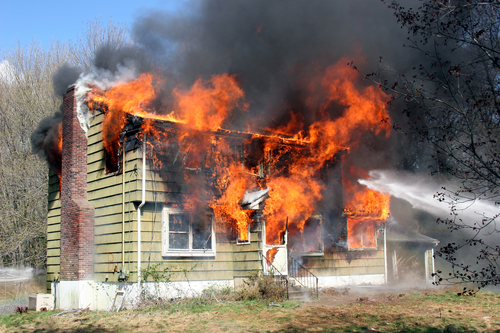(The following is a guest post by Marcus Cree, vice president of risk solutions for SunGard’s capital markets.)
A couple of weeks ago, there was a house fire at my home (no one was hurt, and the house is now in a restoration stage). Afterward, it occurred to me that I write, speak and consult exclusively on the subject of risk management, so this raises an interesting set of questions. How well do I internalize the risk management mindset, and do I apply the principles I espouse in the most important environment I know: my own home?
With this in mind, I decided to move away from strict financial firm risk management and instead apply the same kinds of tests to myself. In a risk strategy assessment, I would normally look at a range of indicators, so I decided to assess the recent situation with the same criteria:
- Early warning of impending crisis
- Contingency tactics for immediate reaction to the crisis
- Post crisis, effect mitigation
- Buy in across the team to the crisis management strategy
Early warning of impending crisis
In a typical financial institution, an “early warning system” would involve the risk management team understanding the level of risk that was deemed acceptable, and understanding what factors feed into this risk metric. This enables tail analysis to be done in order to understand what negative effects are hiding in the extremes of possible immediate spikes in the risk factors as they are being observed now. If the limits are set in accordance with the risk policy, then while the firm is taking active risks, these should be within the boundaries of management risk tolerance.
In a home and family situation, it is not much different. Understanding the potential sources of risk, such as wood burning stoves, electrical wiring, etc., and establishing the accepted level of risk is critical. A home needs to be heated in the winter, and the risk that this poses in terms of fire has to be offset by the need to maintain a reasonable house temperature. That said, appreciating the risk of fire has to be taken into account, and mitigated to the extent to which it can by regular maintenance of the chimneys and stoves. It is also vital to have a warning system in place.
In this case, most likely a smoke alarm system.
Contingency tactics for immediate reaction to the crisis
This is the second most important aspect of risk management. Once the emergency (or financial crisis) is underway, the situation (or losses) need to be held under as much control as can be expected.
In banking terms, this could be seen as liquidity reserves. How long can we survive as an institution under stressed conditions, and how do we make the most of the liquidity that we have? It is here that liquid assets, collateral and re-hypothecation of that collateral come under scrutiny
In the home fire situation, it is more a matter of evacuation. Does each room have at least two viable exits? Do all members of the family know the exit strategy, meeting points, etc.? It is important to understand that a fire is most unlikely on a sunny afternoon, with everyone wide awake. It is far more likely that smoke could be filling the exit corridors while everyone has been sleeping soundly until the moment of crisis.
In many ways, this is the same kind of problem faced by risk managers, who report on VaR numbers based on normal market conditions, only to be faced with a collapsing market and generalized confusion and panic across the market. Indeed, it is the stressed vs. normal assumptions that have caused a lot of criticism of the VaR based risk reporting.
Post crisis, effect mitigation
This stage is really covering the failure contingency, or hedging effects. In banking terms, this typically takes the form of credit default swaps, diversification and market hedges. Stressing these relationships and running disaster scenarios should be a routine job of a risk department. In the home situation, it comes down to insurance, and protection of key documents needed to activate that insurance.
Buy-in across the team to the crisis management strategy
I regularly speak and blog about risk culture and how the true risk managers in a bank are the traders and portfolio managers. The role of the risk department itself, in my view, is to facilitate communication of the risk appetite and the risk position between the senior management (who create the appetite) and the risk takers (who assume it).
In the home situation, the same thing applies. A fire evacuation plan is only good if it is understood by all who may be affected. Smoky 4:00 a.m. darkness is not an environment to start communicating about what needs to be done to prevent or survive a fire. The family has to recognize the smoke alarms, know to call 911, understand the exit options – including how to select the best one, and then know where to meet safely outside.
Ultimately there are risk management trade-offs to be made in order to achieve levels of reward or comfort. This is as true at home as it is within a Wall Street firm. I would rather not have tested my own “micro” risk culture in this way, but since it was tested, I now believe it can improved.

